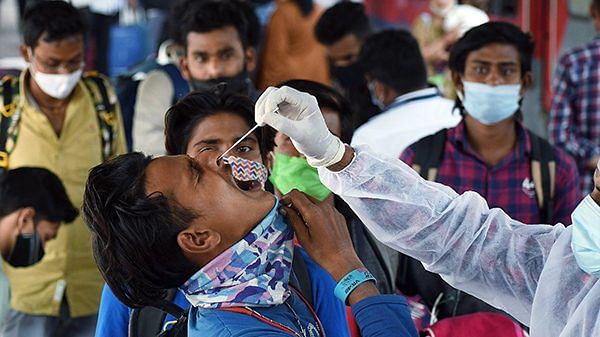The two most prominent challenges in equitable healthcare for all are affordability and accessibility. And as we saw during the Covid-19 pandemic, public-private partnerships can address both the issues for India’s rural communities. Official figures highlight just how big these two hurdles are. To address affordability, the Indian government spends a mere 2.1 per cent of the country’s GDP on healthcare compared to 9.7 per cent across OECD countries. In India, more than half of the healthcare expenditure comes out of citizens’ pockets.
This financial burden pushes 55 million Indians into poverty every year.
When it comes to accessibility, India’s rural and urban populations have diametrically opposite experiences of healthcare. Urban residents, who account for just 28% of India’s population, have access to 66% of the country’s hospital beds, while the remaining 72% of the rural population have access to just one-thirds. Furthermore, 67% of doctors in India practise in urban areas.
Pandemic prompted collaborations on healthcare
But during the Covid-19 pandemic, something rare happened. The pandemic catalysed both the public and private sectors leading to collaborations like never before in diagnostics, technology and treatment.
The synergies that were seen in the management of Covid-19 are unprecedented, the CoWin portal being the best example.
The pandemic has shown us strong evidence that by working together, the public and the private sectors can take quality healthcare to the last mile a lot faster and a lot more affordably.
It would be a massive failure on the part of the healthcare fraternity if we do not further explore the feasibility of such public-private partnerships (PPPs) in the management of other deadly diseases.
The private sector now has a rare opportunity to fundamentally re-define their relationships with health systems, healthcare providers and patients.
Also read: Distrust of Indian doctors isn’t new. Class-caste bias always ruled medical profession
Success of PPP model in Indian healthcare
The PPP model has met with reasonable success in India over the past decade, backed by a slew of policy initiatives. The setting up of a public-private partnership appraisal committee has streamlined appraisals and approvals of projects, in addition to bringing in greater transparency and competitive bidding processes.
In 2021 alone, India received $7.7 billion of committed investments across 25 projects, the largest in the South Asia region. Whereas most countries in the South Asia region saw a sharp drop in PPI compared to 2020, India saw a 49% increase in private investment commitments.
As the resources are being pledged for PPP projects, it remains equally important that these initiatives are practically curated according to situations on the ground and aim for realistic outcomes.
Here are three ways that PPP projects can help address the problems of accessibility and affordability in rural Indian healthcare:
- Expertise: The private sector provides 58% of hospitals and 81% of doctors in India and this expertise pool is predominantly urban centric. The public sector, in turn, has the basic last mile infrastructure in terms of sub centres and primary health centres to reach the remotest populations. Making the private sector services and expertise available in these public health facilities could be a game changer.
- Technology: The primary drivers for ensuring accessibility and affordability in a lot of cases is technology. There is a reason specialist resources are urban centric, and we cannot afford to wait till this distribution becomes universal. Technology is the tool to be harnessed to take the urban expertise to rural settings with minimum physical movement of the patient or of the specialist. Telemedicine initiatives are a strong case in point, the national tele-consultation service eSanjeevani being an apt example.
- Efficiency: The PPP model can ensure that the existing medical infrastructure and resources be leveraged through optimum utilisation at an affordable cost to the end user.
There are some of the PPP initiatives making good use of either one or more of the above-mentioned elements in their strategy and have either made or are making good progress towards the intended impact.
Pune Municipal Corporation’s recent Vaccine on Wheels programme, for example, aims to increase immunisation in India through an equitable, affordable and convenient vaccination service for all by creating hospital-like sterile setups near their communities providing vaccination services.
Yeshasvini Cooperative Farmers Health Care Scheme, an initiative of Bangalore’s super speciality hospital Narayana Hrudayalaya and the Karnataka government, has come as a boon to the farmers in the state.
Members can avail free surgery costing up to Rs 1,25,000 and Rs 2,00,000 for multiple surgeries and in urban Yeshasvini, the maximum limit of treatment per person for single admission is Rs 1,75,000 and for multiple admission is Rs 2,50,000 in the same year.
The Arogya Raksha scheme in Andhra Pradesh is another insurance scheme initiated by the state government, in collaboration with New India Assurance Company and private clinics wherein end-to-end cashless services for 1,059 diseases under secondary and tertiary care are being provided through 400 government and corporate network hospitals.
If used judiciously and well curated to local settings and needs, the PPP projects can very quickly turn around the prevalence of quality healthcare in resource constrained settings in an affordable way.
The current scenario is a nascent stage, and a lot of distance still needs to be covered. The need of the hour is to move from need-based collaboration to a long-term mutually beneficial partnership model. This will enable long-term relationships that can lead to sustainable improvements in health systems.
Dr Ruma Bhargava is Country Lead, Healthcare, World Economic Forum India. She tweets @DrRumaBhargava.
Neelima Dwivedi is Executive Director, Public Policy, Communications & Market Access, MSD Pharmaceuticals. Views are personal.
(Edited by Prashant)



